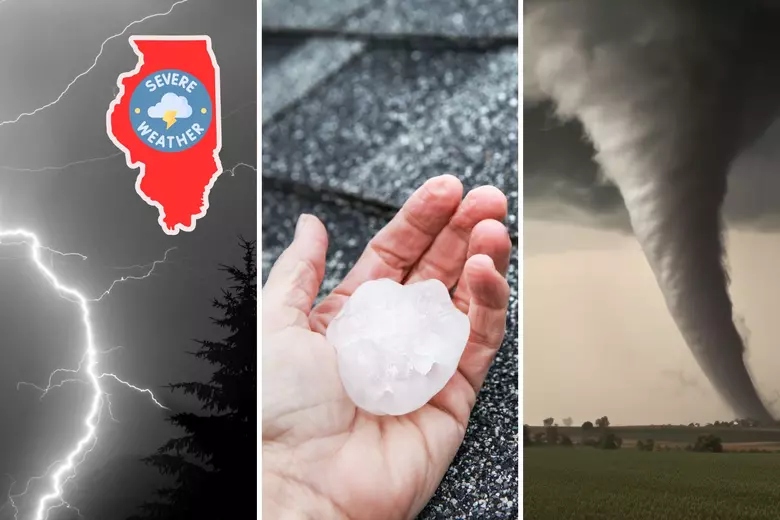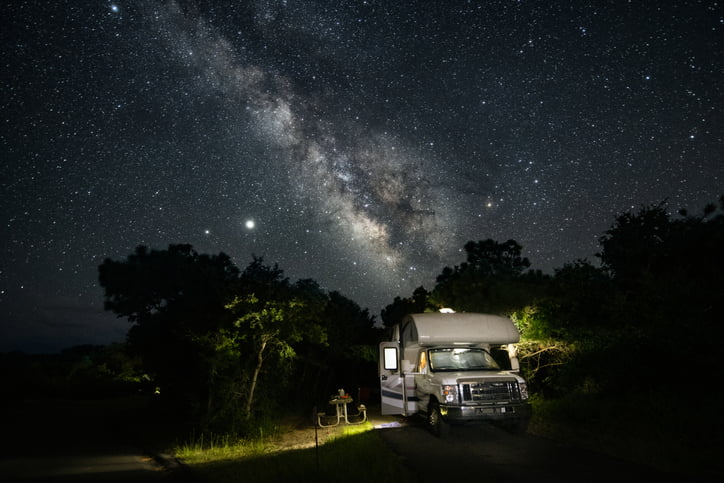Hey Illinois, let’s talk. This isn’t just another rainy Sunday—we’ve got a serious storm system heading our way, and if you live south of I-80, you need to be paying attention. We’re talking tornadoes, damaging winds, and massive hail. This is one of those days where being prepared could make all the difference, so let’s get into the details.
When Things Could Get Rough
- Sunday Morning – Early Afternoon: Things might start off quiet, maybe a little rain here and there. Don’t let that lull you into a false sense of security—this storm is just getting warmed up.
- Sunday Late Afternoon (4 PM – 10 PM): This is go-time. Severe thunderstorms, possible tornadoes, giant hail, and strong winds are expected to hit hard.
- Sunday Night – Early Monday Morning: Some storms may linger, but they should gradually calm down as they move east.
Who Needs to Be on High Alert?
- If you live in Peoria, Springfield, Champaign, or Carbondale, you’re in the highest risk area for severe weather.
- The Storm Prediction Center (SPC) has marked this region under an Enhanced Risk (Level 3 out of 5)—translation: strong storms are very likely, and they could be dangerous.
What’s Headed Our Way?
Tornadoes: Some of these could be strong and on the ground for miles. Nighttime tornadoes are especially dangerous, so make sure you have a way to get alerts while you’re sleeping!
Damaging Winds: We’re talking gusts over 70 mph, which can take down trees, power lines, and even cause roof damage. Charge your phone now—power outages are possible.
Large Hail: This won’t be the tiny stuff—expect golf ball-sized hail or bigger. If you can, move your car into a garage or cover it up.
Flash Flooding: Heavy rain could lead to sudden flooding, especially in low-lying areas. If you see water over the road—turn around! Don’t risk it.
How to Get Ready NOW
✔ Find Your Safe Spot – Know where you’ll go if a tornado warning is issued. Basements or interior rooms with no windows are best. If you live in a mobile home, find a sturdier place to shelter now.
✔ Stay Connected – Make sure your phone is charged and emergency alerts are turned on. A NOAA weather radio is a great backup in case of power loss.
✔ Pack an Emergency Kit – Flashlights, extra batteries, water, non-perishable food, and first-aid supplies should be within easy reach.
✔ Secure Your Yard – Bring in or tie down patio furniture, trash cans, and anything that could become a flying hazard.
✔ Talk with Family & Neighbors – Make sure everyone knows the plan, especially if storms hit overnight while people are asleep.
What Happens After the Storm?
Once this storm moves out, we can finally take a breath. Cooler and calmer weather is expected for the start of the week, with highs in the 60s and 70s and some sunshine by Tuesday.
This is one of those storms that can go from bad to worse in minutes. Don’t wait until the sirens are blaring—stay aware, make a plan, and be ready to act fast.



